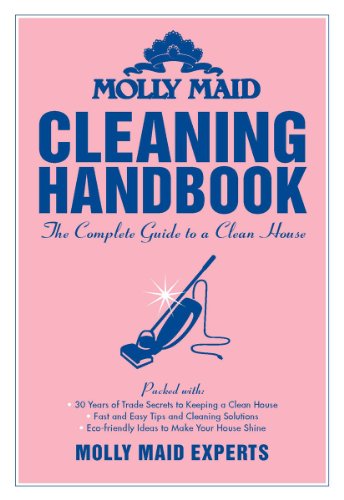
Step 2: Painting and Finishing
Following some useful tips and tricks on where to find the best upcycled furniture in our May 13th blog, the residential cleaning experts at MOLLY MAID are now going to provide us with some handy ideas of how you can paint and finish your upcycled furniture.
Painting and Finishing
Consider using chalk paints for a matte and chalky finish. Once you have sanded your piece of furniture and created a smooth surface, you can easily paint over any dark stains or veneers. You can even get creative and experiment different ways of finishing your furniture. The following are some suggestions on how to obtain a unique finish.
Sand your piece of furniture until you have created a smooth surface. Apply two or more coats of paint. Wax and buff the piece of furniture once the paint has dried. Once you are confident with applying the paint, be as creative as you like!
The Distressed Finish
To create a distressed finish on your furniture, take a piece of sandpaper and rub it over the finished product.
The Streaky Finish
Chalk paints allow for many different finishes. Water down your chalk paint before painting your furniture. This will give you a streakier finish.
The Aged Finish
Once you have applied the chalk paint to your furniture, add a crackle glaze to five your furniture the effect of an aged oil painting.
You can also try layering different colours which can be exposed when rubbed back. A bright white under a dark green or blue gives a fresh seaside appeal, or red will provide a warm, decadent look.
If you want to use emulsion paint you will need to sand your furniture to provide a surface for the paint. Prime the furniture with fine sand paper, apply an undercoat and then use either an emulsion for a more distressed look or eggshell for a durable finish.
Tip: When sanding, make sure to sand in and around the areas that you generally see the most such as on the corners or arms of a chair.
Paint Effects
Paint effects on your upcycled finds will add great charm to your pieces and even personalize them too.
Gliding
Items with carvings or detailing are perfect for gilding with a dust of gold leaf. For a more cost effective way of gilding, purchase loose leaves of brass rather than gold, this will add a rich shimmering tone. Apply gold size on the area you would like to gild, and then carefully pat on the loose leaf. Use sparingly if you want to create a look of faded grandeur. Try lightly sanding the piece and paint the surface sparingly and sporadically to give a hint of more affluent times – perfect for creating a boudoir feel!
This effect also looks stunning on photo frames and will make your favourite pictures glow. It’s a great technique for mirrors too. If the mirror you are painting is gold, you may just want to rub the paint back to reveal its former colour.
Stencilling
Stencilling is extremely satisfying as it is creative and adds another beautiful dimension to your painted surface. It also allows you to add a painted effect without painting the whole piece of furniture.
Try a bold leaf stencil across larger furniture such as wardrobes for a Provençal approach, or use a delicate pattern that intermittently fades for a vintage look. Stencils can be bought online or you can even cut your own designs from a piece of stencil paper using a sharp craft knife. Stipple the paint through the stencil using a large bristled brush and add a covering of wax to protect it. If you want something even more creative, try hand painting vines that diagonally flow across a bureau in greys for a dazzling effect!
Have fun and get crafty!

